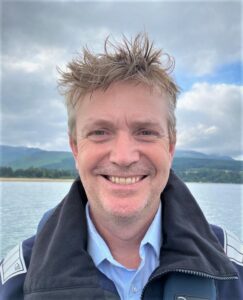Loch Long Salmon announces community consultation

The company proposing to farm salmon on Loch Linnhe with a new closed containment system will be presenting its plans to the public in September and October.
Loch Long Salmon has submitted a Proposal of Application Notice (PoAN) notice to Argyll & Bute Council for a “closed containment at sea” salmon farm near Lurignish cattle farm on Loch Linnhe, on Scotland’s west coast.
Last year a previous application by the company for a new farm at Beinn Reithe, near Arrochar, was turned down by the Loch Lomond and the Trossachs National Park board.
Alternative plans for a site at Balnagowan, also on Loch Linnhe, have been dropped and the company will now be focusing on Lurignish.
Loch Long Salmon argues the use of closed containment at sea salmon farming systems, often called “semi-closed” containment, addresses environmental concerns some have regarding the current approach. The company says it wants to bring new jobs and investment to Argyll, securing the future of one of the most important parts of Scotland’s rural economy while addressing these concerns.
The dates and times of the exhibitions for the Lurignish Closed at Sea Fish Farm are as follows:
- Duror & Kentallen Community Centre – 14 September (2pm – 7pm)
- Appin Village Hall – 24 October (2pm – 7pm)
More information is available at the Loch Long Salmon website (www.lochlongsalmon.com).
The marine infrastructure would include eight closed farming enclosures measuring approximately 50m in diameter as well as two freshwater holding units, and a closed harvest enclosure. The shore base would be located adjacent to the marine infrastructure, approximately half a kilometre west of Lurignish Farm.
From the surface the containment at sea farm would look similar to a conventional salmon farm, but underneath the water, the net is surrounded by an impermeable membrane, with water drawn up and circulated from deeper in the Loch. The aim is to protect the fish from sea lice and attacks by seals, meaning that sea lice treatments or acoustic deterrent devices should not be required.
The secondary barrier is also intended to capture almost all of the salmon waste, and this would be recovered and used in green energy production or as a fertiliser ingredient.
The company says: “Hundreds of production cycles using these systems in other countries have proven these facts, as well as showing no escapes, addressing a further concern around the aquaculture sector.”

Stewart Hawthorn, Loch Long Salmon
Commenting on the application, Stewart Hawthorn, Managing Director of Loch Long Salmon, said: “We have already met with many local people as we have been developing our proposal for this location. I am proud to be bringing this approach to Scotland as we seek to address environmental and fish welfare concerns regarding the salmon farming sector in Scotland.
“Delivering low carbon, low environmental impact food is one of the key global challenges we face as a society. We must bring this technology to Scotland quickly so we are part of the solution to man-made climate change and to address more local environmental and fish welfare concerns. Inaction is no longer an option; we must act urgently and embrace change if we are to make a positive difference.”
“I hope as many people as possible will come along to the next two events now that the formal planning application process has started so we can explain how transformative and proven closed containment at sea salmon farming could bring jobs and investment to the community, while addressing the environmental concerns some people have.”
Loch Long Salmon has already undertaken what it describes as “extensive and constructive engagement with local people” including open information days in Appin (22 March 2023) and Duror & Kentallen (17 April 2023), a meet the buyer event in Oban (10 May 2023), as well meetings and briefings with local community councils and elected representatives.

FiiZK closed containment system

